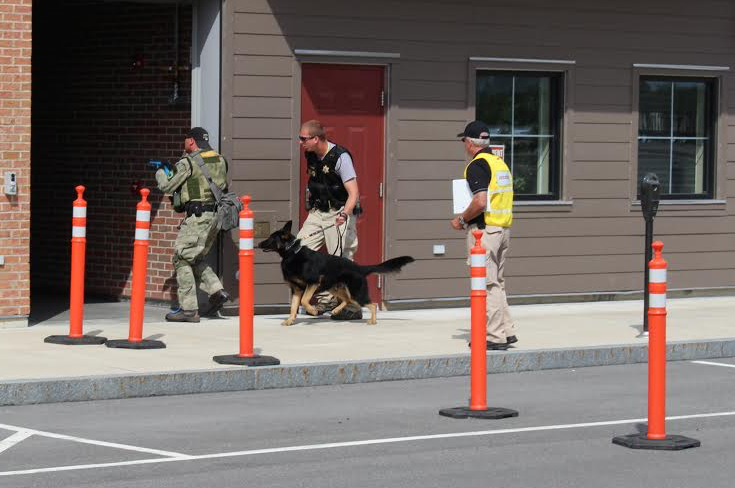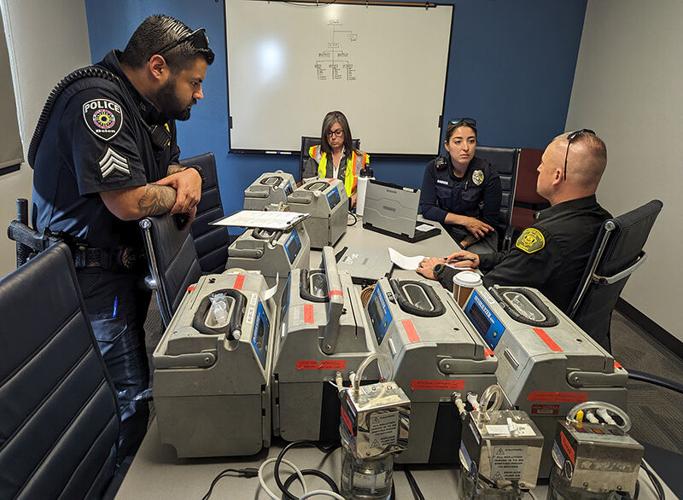![]()
Monday, September 19, 2016 by Tracy Rozens
More than 100 first responders gathered in New York this week for the state’s largest emergency response training exercise featuring realistic scenarios inspired by terrorist threats in the United States and abroad and utilizing the newest communications technology for law enforcement.
The Excelsior Challenge took place over three days at the 700-acre State Preparedness Training Center in Oriskany, N.Y. Bomb squads, canine handlers, tactical team officers and emergency medical services took part in scenario-based exercises similar to terrorist attacks in Paris, San Bernardino, Brussels and Dallas.
“We’re constantly seeing what’s happening around the world and we tailor our training courses and events for those types of real-world events,” Bob Stallman, assistant director at the New York State Preparedness Training Center, told Homeland Preparedness News.
Stallman noted that the threat of terrorism has evolved in recent years, and to keep up with that challenge, training scenarios are constantly being evaluated and improved by the State Division of Homeland Security and Emergency Services (DHSES), which operates the center.
“We’re still concerned about all the things that we were concerned about five to 10 years ago,” Stallman said. “But now we have the addition of smaller-scale, lone wolf-inspired attacks. They use small arms fire and homemade explosive devices.”
One training scenario simulated an attack on a large gathering of people in an open space, similar to the attack in Dallas. Another training activity was based on the San Bernardino terrorist attack in an office complex. An attack on a mass transit bus station was also simulated.
For the first time, this year’s training program incorporated the state’s new online electronic system that connects every county across New York to aid in disaster response and recovery. The system, NY Responds, allows county emergency management agencies to connect with the New York State Emergency Operations Center in Albany to improve coordination and cooperation during disasters and emergencies.
As part of NY Responds, counties have access to new technology known as Mutualink, which improves interoperability by integrating telephone, radio, video and file-sharing into one application to allow local emergency staff to share real-time information with the state and other counties.
During the Excelsior Challenge, video and audio of the training scenarios were live-streamed to users through Mutualink. In an actual emergency, video can be streamed live to an emergency operation center, where managers can see what is happening on the ground and make decisions on how best to deploy personnel and equipment.
“That’s all real-time, live as it is happening,” Stallman said. “And that is a game changer.”
Also new this year were scenarios that gave EMS personnel an opportunity to integrate their response efforts with law enforcement – an important element.
“Nothing is more critical, especially when you are talking about an active shooter situation with small arms fire and gun shot wounds, where if victims don’t get the medical attention they require within a very short period of time, they aren’t going to survive,” Stallman said.
This year’s exercise included students from SUNY Albany’s College of Emergency Preparedness, Homeland Security and Cybersecurity, a first-of-its-kind program in the United States.
“There was such demand from students to come out here. These are all students getting into this field. Many of them will be commanders or managers,” Stallman said, noting the importance of getting students out of the classroom for hands-on training.
The students received briefings on the exercise from DHSES, learned how DHSES supports law enforcement specialty teams, and listened to experts discuss the current threat environment.





